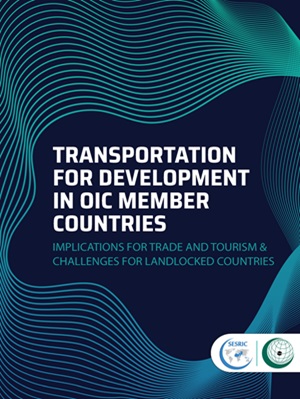 Transportation is essential for development and an enabler of economic activity. It is also a mirror reflecting the level of economic development of a country. The relationship between transportation and economic development is broad, with the general idea being that transport infrastructures lead to economic development through various channels. However, the relationships between transport and economic development actually occur in two directions. On the one hand, there are linkages that can help explain how transport has an impact on economic activity. On the other hand, economic activity itself can drive and shape the demand for transport (in terms of quantity, type, location, and mode), thus stimulating, and influencing the outcomes of, a transport intervention.
Transportation is essential for development and an enabler of economic activity. It is also a mirror reflecting the level of economic development of a country. The relationship between transportation and economic development is broad, with the general idea being that transport infrastructures lead to economic development through various channels. However, the relationships between transport and economic development actually occur in two directions. On the one hand, there are linkages that can help explain how transport has an impact on economic activity. On the other hand, economic activity itself can drive and shape the demand for transport (in terms of quantity, type, location, and mode), thus stimulating, and influencing the outcomes of, a transport intervention.
However, the literature usually suggests that the impact of new transportation infrastructure differs by the level of development. According to this approach, in developed countries, where transportation networks are well developed, the gains of additional investment in transportation might be marginal; however, in developing countries, which are usually characterized by inadequate transport infrastructure and inadequate access to affordable transport services, investments in transport are likely to yield massive benefits. However, the multiplicity of factors influencing the linkages between transport infrastructures and development indicates that a set of complementary conditions must be met for transport improvements to translate into improvements in economic performance.
Despite the fact that transport and mobility are important prerequisites for economic progress, social development, and global trade, transportation is highly associated with significant negative externalities. For instance, transportation contributes to air pollution and climate change, road crashes, accidents, congestion, and highly dependent on oil. In 2020, the transport sector was responsible for 57% of world oil demand, 28% of overall energy consumption, and 24% of all direct CO2 emissions from fuel combustion. Moreover, air pollution, road crashes, and accidents are causing an increase in transport-related risks of mortality. This results in a substantial economic and social burden.
Current transportation practises are deemed unsustainable and pose a significant impediment to economic and social progress. There is an urgent need to move towards sustainable transport systems. Sustainable transportation is a means for the transport sector to embrace sustainable development. Eight of the seventeen SDGs are related to transportation. Sustainable transport may stimulate economic, social, and environmental development, through the improvement of health and well-being (SDG 3), clean energy (SDG 7), sustainable cities (SDG 11), industry innovation (SDG 9), and responsible consumption (SDG 12), while at the same time contribute to the achievement of zero hunger (SDG 2), climate change actions (SDG 13), and clean water and sanitation (SDG 6). In order to achieve sustainability, the transport sector must undergo three major changes: increasing the use of active modes and public transportation; replacing the current fleet of internal combustion engines with zero-emission vehicles; and decreasing car dependence and travel distances.
Online Electronic Version
- Transportation for Development in OIC Member Countries: Implications for Trade and Tourism & Challenges for Landlocked Countries (English)